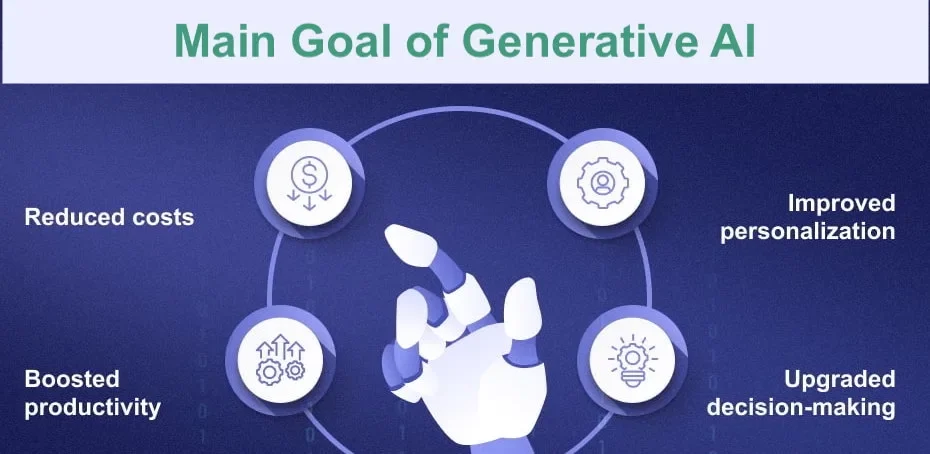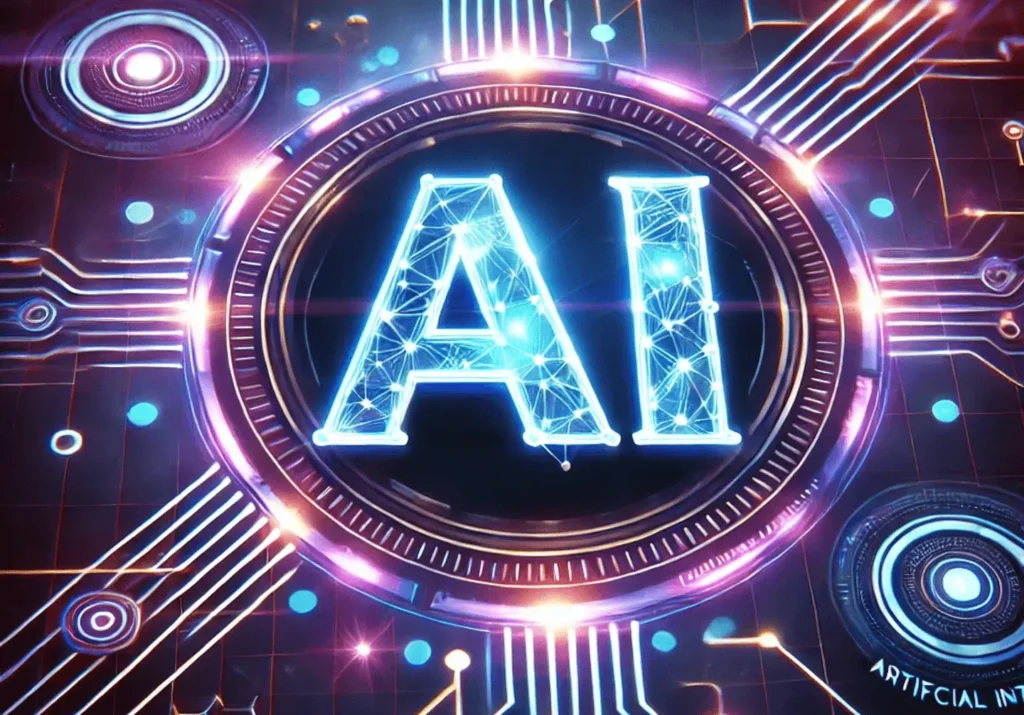Imagine having an AI that can write stories, create artwork, compose music, or even generate video content—all by itself! That’s what Generative AI does, and it’s changing the way we work, create, and interact with technology. But what’s the main goal of Generative AI? Is it just about making cool content, or is there more to it?
In this article, we’ll explore: What Generative AI is and how it works. Its primary goals and real-world applications. How it’s shaping the future of creativity, automation, and problem-solving.
Let’s break it down in the simplest way possible! 🚀
What is Generative AI?
Generative AI is a type of artificial intelligence that creates new content—like text, images, music, or even video—based on patterns and examples it has learned. Unlike traditional AI, which analyzes and interprets data, Generative AI actually produces something new.
How Does It Work?
Think of Generative AI as a highly advanced predictive artist:
- Learns from data : AI studies tons of existing content (text, images, etc.).
- Finds patterns : It understands how content is structured.
- Creates new content : AI generates original text, images, or sounds based on what it has learned.
Example: ChatGPT can write human-like responses because it has been trained on massive amounts of text data. Similarly, DALL-E can create stunning images from simple text descriptions!
What is the Main Goal of Generative AI?

The ultimate goal of Generative AI is to enhance human creativity, automate content creation, and solve complex problems. Let’s break it down into specific objectives:
1. Creating Unique & High-Quality Content 🎨✍️🎶
Generative AI can write, draw, compose music, and even create videos.
- ✅ Text Generation: AI can write blogs, stories, ad copies, and even scripts (like ChatGPT!).
- ✅ Image & Art Generation: Tools like DALL-E and Midjourney create AI-generated artwork.
- ✅ Music & Audio Generation: AI composes original music tracks and even mimics voices.
- ✅ Video & Animation: AI can produce short films, animations, and even deepfake videos.
💡 Real-World Example: Netflix uses AI to create personalized thumbnails for shows based on what users like.
2. Boosting Productivity & Efficiency 🚀💼
Generative AI helps automate time-consuming tasks so humans can focus on bigger ideas.
- ✅ Automating Routine Work: AI can draft emails, generate reports, and even write code.
- ✅ Speeding Up Creative Processes: AI helps writers, designers, and marketers brainstorm faster.
- ✅ Improving Decision-Making: AI generates insights from massive datasets, helping businesses make smarter choices.
💡 Example: AI in customer service chatbots reduces workload for human agents, making support faster and more efficient.
3. Driving Innovation & Scientific Discovery 🔬🧪
AI isn’t just for art—it’s accelerating breakthroughs in science and medicine!
- ✅ Drug Discovery: AI predicts molecular structures to create new medicines faster.
- ✅ Climate Research: AI models predict weather patterns and climate changes.
- ✅ Space Exploration: NASA uses AI to analyze space data and find new planets.
💡 Example: AI-powered robots helped discover new protein structures, paving the way for future medical advancements.
4. Personalization & Enhanced User Experience 🎯🛍️
AI makes digital experiences more customized and engaging.
- ✅ Tailored Content: AI suggests personalized Netflix shows, YouTube videos, and Spotify playlists.
- ✅ Adaptive Interfaces: AI changes website layouts based on user behavior.
- ✅ AI Chat Assistants: Tools like Siri, Alexa, and Google Assistant make interactions more seamless.
💡 Example: AI helps e-commerce sites suggest products based on past purchases and browsing history.
5. Addressing Global Challenges 🌍🤖
Generative AI is also helping solve real-world problems:
- ✅ Healthcare: AI analyzes medical data to detect diseases early.
- ✅ Education: AI-powered tutoring systems provide personalized learning.
- ✅ Environmental Sustainability: AI predicts and helps mitigate climate change effects.
💡 Example: AI-driven wildfire detection systems help prevent disasters before they happen.
People also read about Web 3.0 – The Future of the Internet.
The Future of Generative AI: What’s Next?
- AI will become even more creative : We can expect AI-generated movies, books, and interactive games.
- Ethical AI development will be crucial : Most probably the regulations will focus on reducing AI biases and misinformation.
- AI and Humans Will Work Together : Instead of replacing humans, AI will enhance human capabilities.
Conclusion: Why Generative AI Matters
The main goal of Generative AI is not just automation—it’s about enabling human creativity, solving real-world problems, and enhancing productivity.
As AI continues to evolve, it’s important to use it responsibly and harness its potential for good. Whether you’re an artist, a scientist, or a business owner, Generative AI is here to make your work smarter and more efficient.
FAQs
The main goal of Generative AI is to create new content, enhance creativity, and automate tasks using advanced machine learning models.
Traditional AI analyzes and processes data, while Generative AI creates new content based on learned patterns.
No. Generative AI assists creativity but lacks human intuition and emotional depth, making it a tool rather than a replacement.
It boosts productivity, creativity, innovation, and personalization while solving complex problems in various industries.
From chatbots and content creation to personalized recommendations and AI-powered design tools, Generative AI is part of our daily digital experiences.

